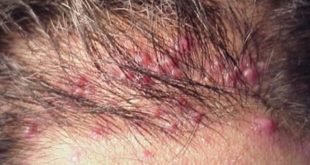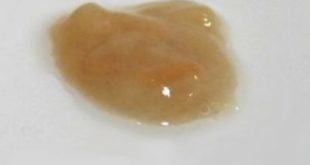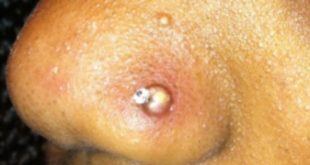Ingrown hair on thighs seems to be inevitable no matter how careful we are in shaving or trimming the hair in our pubic area. Ingrown hair is common in both female and males. You could develop the bumps regardless of your age provided you shave of wax you thighs. Here is an insight on how to get rid of ingrown hair.
Can you get ingrown hair on inner thighs?
Contents
Yes, it is possible for one to develop the ingrown hair. Ingrown hair can be very painful, in most cases, it cause bumps and causes the skin to become red. Ann ingrown hair will appear in two ways, the first is common in people with curly hair which curls and grows back into the skin. The other way is, the hair grows sideways into the skin due to hardened, dead skin cells on the surface.
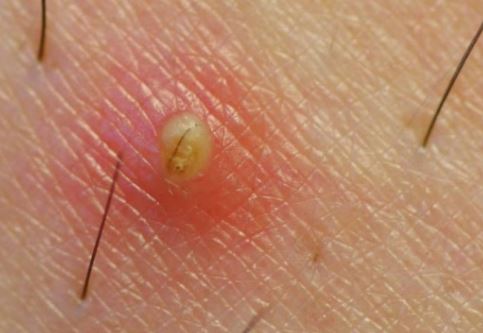
Ingrown hair can develop anywhere on your skin. They are however most likely to develop on buttocks, thighs pubic area and other body parts with weak skin. Johnson and Hlbba Kaplll, the founder of threading and waxing salon Hlbba NYC, list five things that they say increases the chances of you getting an ingrown hair, they include the following:
- Having natural coarse hair
- Wearing tight clothes for long
- Tugging the skin with razor
- Waxing or shaving in the wrong direction
- Failure to exfoliate regularly
These causes are discussed below. Avoiding the causes is key in preventing ingrown hair from not only developing on your thighs but also anywhere on your skin.
What causes ingrown hair between thighs?
Apart from being painful, ingrown hair can really be annoying and discomforting. It is not uncommon for your to develop these bumps regardless of doing everything correctly. Ingrown hair does not pose any health risk, they may, however, become very painful especially when infected or popped.
An ingrown hair occurs when the hair fails to penetrated the skin, curl backward and grows into the skin or grows sideways beneath the skin. This commonly occurs when your hair follicles become blocked of clogged with dirt or with sebum, an oily secretion of the sebaceous glands.
The hair will block the skin pores known as hair follicle which will become clogged with dead skin, sebum, and other skin materials to form painful and irritating bumps.
1) Having naturally coarse or curly hair
Those with naturally curly hair stand higher chances of developing ingrown hair compared to others. In this case, the air might have grown out of the skin then curled back and re-enter the skin [nnhs.uk]. Some hair strand may curl back into the hair follicle without even exiting the skin.
2) Poor shaving technique- shaving or waxing in the wrong direction
When shaving, you need to lather well in the direction of the hair growth with a pre-shaving cream or gel. This way you are able to soften stubble, it helps reduce skin irritation which prevents ingrown hair. For waxing, it is better to have it done by a professional.
You can also try sugaring, a natural alternative to waxing or laser hair removal. The sugaring gel is made of sugar, lemon, and water, this paste will only stick to the hair and not the skin it hurts but gets the hair out of the root.
3) Failure to exfoliate after hair removal
Exfoliating after shaving gives your skin chance to soak and soften. Use a mold-resistant wash cloth and an antiseptic body wash with skin-soothing ingredients like green tea and tea tree oil. You can thereafter apply a bikini balm in your underarms and bikini area to relax and close the pores.
4) Dead skin cells
You can also develop an ingrown hair when your hair follicle-small cavities in the skin that hair grows out of becoming clogged with dead skins. The clogging is what forces the hair inside it to grow sideways. This is most likely to happen if the hair is curly or Coase and has been shaved recently.
5) Shaving waxing and other hair removal methods
Ingrown hair is common in areas of the body that you shave often. This will include the beard area in men, legs, armpits and pubic area in women. After shaving, the hair that grows back has a sharper end, this mean, they can easily poke back into the skin.
6) Wearing tight clothing’s
Wearing tight clothing is the other common trigger of ingrown hair. Tight clothing and synthetic fabrics such as nylon leggings, skinny jeans, and polyester underwear can worsen an ingrown hair. This is because the continued friction and irritation between the clothes and the skin will lead to the inflammation and damage of the hair follicles which can cause them to become blocked.
You can prevent this by sticking to easy cotton clothing that is breathable and won’t rub against the skin.
7) Tugging at the skin with the shaving razor
When shaving, some people will tend to hold the razor too close to the skin. This basically scrapes the skin as they shave. This is common, especially when using a dull razor with the worn-down guard. What happens is the irritation of the skin that leads to ingrown hair.
How to prevent ingrown hair on thighs
Since shaving is the leading cause of ingrown hair, the simple way to prevent them from developing would be to avoid shaving, let your hair grow freely without shaving. You could try this for a brief period if you want relief for bad spots.
Though it might help, this won’t be a solution but rather running from a problem. If you can’t stop shaving, then you need to adopt the following shaving tips.
- Adopt a proper shaving technique where you will use a sharp, single-bladed razor.
- Avoid shaving when the skin is dry, wet your skin with warm water and always use a shaving gel or cream
- You also need to adopt a proper shaving technique, this means shaving in the direction the hairs are growing
- Use a few strokes f razor as possible
- Try not to shave too close to the skin, and rinse the razor after every stroke
- You can also use gentle skin care products that will help keep your skin moist and hydrated after and before shaving
- You need to adopt a proper skin care this includes dieting and proper hygiene to prevent the clogging of the hair follicles
- Finally, you need to avoid tight clothes. Stick to loose clothes that give your skin room to breathe.
- If you have to wax, let it be done by a professional
- You could also switch between different forms of hair removal and see what works.
Symptoms of ingrown hair on inner thighs
From our discussion, we have seen that it is quite inevitable to have an ingrown hair especially for those who shave. The constant irritation, the blocking of the hair follicle and natural occurrence of curly or coarse all contributes to the formation of an ingrown hair.
What then are the symptoms that differentiate an ingrown hair bump from other skin bumps? Unlike pimples and other skin bumps, an ingrown hair will develop underneath the skin, some will be filled with pus-a clear yellowish fluid. Some ingrown hair bumps will be painful, itchy and irritating.
These symptoms are:
Dark spots or scars on inner thighs
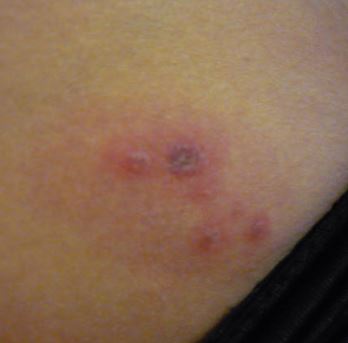
It is not uncommon for people who shave to have dark spots or scar on their thighs. The darkening is from the trapping or the growth of hair underneath the skin. Exfoliating or manually removing the trapped hair strands with a pair of tweezers might help with the ingrown hair.
Ingrown hair cysts
The duration and location of an ingrown greatly influence the chances of the ingrown hair developing into a cyst. A skin cyst is a fluid-filled bump lying just underneath the skin. It is common and harmless and may go away without treatment.
It is hard to tell the difference between a cyst and skin bumps that might need agent medical attention. If you suspect an ingrown hair to have turned into a cyst, have it checked out by a dermatology as soon as you can.
Painful bumps
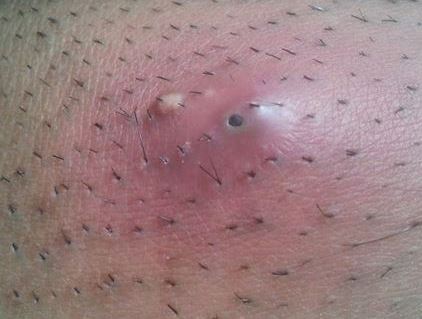
A painful ingrown hair or cyst appearing on the thigh is a clear sign that the bump is infected. The infection could result in various reasons. This could include such things as touching the bump with dirty hands, picking or tweezing with dirty sharp object or failure to maintain good standards of body hygiene.
A bacterial infection of an ingrown hair will result in an accumulation of yellowish to green pus. The bump will become tender, turn red and feel warm. Not treating the infection early could lead to it developing into a painful boil or abscess.
How to treat infected ingrown hair on thighs
An infected ingrown hair can be very painful. It is important to seek immediate medical attention to prevent it from developing into painful, pus-filled boil or abscess. Failure to treat the infection in time might also lead to the infection spreading into other parts of the body, to treat an infected ingrown hair, you need to have a dermatologist or a professional health care provider look into it.
A professional diagnosis will help establish the underlying cause of the infection and appropriate medical treatment can then be prescribed. Treatment for an infected ingrown bump will include the following:
- a)Injection
Depending on the extent of the bacterial or other infections, your doctor might prescribe an injection to try and counter the infection from spreading to other parts of your body. The commonly prescribe injections are retinoid or antibacterial injection
- b)Oral pills
For a mild case of infection, oral pills are used. This will include pills that fight the infection and those that help relieve some of the symptoms that accompany an infected ingrown hair. These symptoms include inflammation and swelling of the skin, itching and irritation and pain and tenderness.
- c)Topical creams
Some of the symptoms above can be relieved with topical ointments such as anti-itching creams, anti-inflammatory cream, antifungal and anti-bacterial topical creams.
- d)Surgical removal
Your dermatologist is likely to prescribe a surgical procedure for the removal of large painful ingrown hair causing lots of discomforts. Though rare, this is a possible way of treating an infected ingrown hair on thighs.
- e)Acne medication
If you need to prevent scarring after healing or treatment of an ingrown hair, then you will need an acne based treatment. This kind of treatment is good for ingrown hair follicle cysts. The salicylic acid present in most acne treatment has a powerful action that helps exfoliate the skin and dry out the cysts.
Most of this medicine contain hydrogen peroxide, for before using them, make sure you consult your health care provider or a professional dermatologist.
- f)Try using a mild astringent
Astringents tighten pores which make it difficult for hair to grow back into the skin. For those with sensitive skin, you might switch from a chemical astringent and use a natural astringent such as cucumber juice.
- g)Avoid picking on the ingrown hair
You need to avoid picking, popping, scratching or draining an ingrown hair to reduce the chances of it getting infected.
How to get rid of ingrown hair on thighs
Ingrown hair on thighs though painful and irritating is not a call for concern of medical emergency. Most of the symptoms accompanying the bumps such as redness, itching, inflammation and irritation of the skin can be managed and controlled at home. Natural antibiotics and antiseptic remedies like raw honey and aloe Vera can also help treat mild bacterial and fungal infection. The remedies can also help prevent the said infections.
When used properly home remedies will help soothe the skin, reduce inflammation and irritation. Here is how to get rid of ingrown hair on thighs using home remedies.
1) Tea tree oil
Tea tree oil is an essential oil with fresh aromatic odor. The oil has antibacterial, antiseptic and anti-inflammatory properties that help heal the skin and prevent infection either bacterial or fungal. When using it as a remedy, make sure to dilute it before applying it on your skin. The oil should also be applied after cleaning the infected area with an antibacterial soap.
2) Using cucumber slices
The other way to reduce the irritation, pain, and inflammation is by using cucumber slices. Cucumber has been found to contain hydrating and anti-inflammatory properties. This makes cucumber an effective choice for dealing with the irritating symptoms of an ingrown hair.
- Clean a fresh cucumber and slice it into thin slices
- Place them on a plate and chill them in the refrigerator for close to 20 minutes
- Gently rub the chilled cucumber slices on the affected area of your thighs
- You need to this do several times in a day for optimal result
- The other way to use cucumber as a remedy it to:
- Make a puree of cucumber
- Into it add a half a glass of milk then stir gently to mix
- Chill the mixture in a refrigerator for some minutes
- Remove and soak a clean face towel or a cotton swab in the mixture and apply it on the affected area of your thighs,
- Do this gently for a few minutes
- After doing this, rinse the remedy off with lukewarm water
- Follow the remedy twice or thrice in a day
3) Apple cider vinegar
Apple cider vinegar is a natural anti-inflammatory agent. It has been used to different skin condition to reduce inflammation and to soothe the skin. When used on an ingrown hair on thighs, it will help destroy bacteria and yeast occurring on the skin, this way you are not only able to treat an infected ingrown hair, but also to prevent the chance of an ingrown hair becoming infected in the first place.
To prepare and use the remedy,
- You will need a clean cotton ball and a considerable amount of apple cider vinegar
- Clean your thighs or the area with warm water and a mild soap
- Dry your thighs using a clean towel
- Do this gently to prevent popping or irritating the skin
- Soak the clean cotton ball in the solution of apple cider
- Gently dab the solution on the affected area
- Repeat this twice in a day
4) Sugar scrub or raw honey
Honey contains antibacterial properties that help prevent an ingrown hair from becoming infected. Honey is also a natural skin moisturizer when applied on a swollen ingrown hair, it could help reduce the inflammation.
Sugar, on the other hand, can be used to pull out an ingrown hair as it does not stick on the skin but on the hair making it easy to pull it out. Thus a paste of sugar can help to gently exfoliate the skin, removing dead cells and helping the ingrown hair to penetrate the skin.
Just apply a thin layer of raw organic honey or Manuka honey on an ingrown hair, leave the paste own for some minutes before rinsing it off with lukewarm water. Do this repeatedly twice or thrice in a day.
5) Applying a paste of baking soda
Another effective solution for the ingrown hair that lies in your kitchen is the baking soda. Also known as sodium bicarbonate, it contains anti-inflammatories that make it a great skin soothing agent. A paste of baking soda can be helpful in relieving itching by exfoliating the skin. The paste is also good for reducing redness n thighs caused by the ingrown hair.
6) Apply some aloe Vera gel
Aloe Vera is one of the naturally occurring plants with a lot of medicinal properties. The plant contains anti-inflammatories, anti-itching, and anti-bacterial properties. This makes aloe Vera an effective remedy for infected ingrown hair on thighs. The gel is also a great skin moisturizer.
To reap the cooling and the soothing nature of aloe Vera:
- Extract the gel from a fresh cut aloe Vera leave
- You could also slice the leaves into thin pieces and rub the gel on the irritated ingrown hair
- Leave it on for 20 minute before rinsing it off with lukewarm water
- Repeat the process twice or thrice in a day
7) Other remedies will include the following
- A warm compress
- Exfoliating the skin
- Treat with honey paste
- Rinsing with salt
- Using an aspirin paste
- Compressing with black tea
References.
- Ingrown hair:
- How to prevent ingrown hair on skin: http://www.wikihow.com/Prevent-Ingrown-Hairs-on-Your-Legs
- How to get rid of ingrown hair: http://www.wikihow.com/Remove-an-Ingrown-Hair
- Preventing ingrown hair on thigh:
- Causes of ingrown hair:
